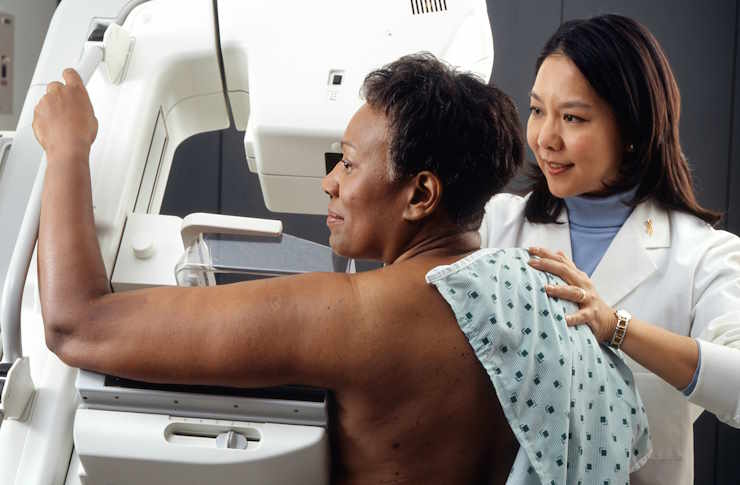How Age Influences PSA Levels and What to Know
Understanding prostate-specific antigen (PSA) levels becomes increasingly important as men age, particularly when considering prostate cancer screening and treatment options. PSA is a protein produced by the prostate gland, and its levels in the blood can indicate various prostate conditions, including benign enlargement, inflammation, or cancer. Age plays a crucial role in determining what constitutes normal PSA levels, making it essential for men to understand these variations and their implications for prostate health monitoring.

What Are Normal PSA Levels by Age Groups
PSA levels naturally increase with age as the prostate gland typically enlarges over time. For men in their 40s, normal PSA levels generally range from 0 to 2.5 ng/mL. Men in their 50s typically see normal levels between 0 and 3.5 ng/mL, while those in their 60s may have normal ranges up to 4.5 ng/mL. Men over 70 often have normal PSA levels ranging from 0 to 6.5 ng/mL. These age-adjusted ranges help healthcare providers better interpret PSA results and reduce unnecessary anxiety or procedures for older men with naturally higher levels.
Understanding High PSA Level Indicators
Elevated PSA levels don’t automatically indicate prostate cancer, but they do warrant further investigation. Generally, PSA levels above 4.0 ng/mL are considered elevated, though this threshold varies based on age and individual risk factors. Levels between 4.0 and 10.0 ng/mL fall into a gray area where additional testing may be recommended. PSA levels above 10.0 ng/mL are more concerning and typically prompt immediate further evaluation. However, conditions like benign prostatic hyperplasia, prostatitis, or recent medical procedures can also cause temporary PSA elevations, emphasizing the importance of comprehensive evaluation rather than relying solely on PSA numbers.
How Age-Specific PSA Charts Guide Treatment Decisions
Age-specific PSA reference ranges help oncologists and urologists make more informed decisions about when to recommend biopsies or begin treatment protocols. Younger men with PSA levels above their age-adjusted normal range may require more aggressive monitoring, as prostate cancer in younger patients often behaves more aggressively. Conversely, older men with moderately elevated PSA levels might be candidates for active surveillance rather than immediate intervention, especially if they have other health conditions that affect life expectancy. These charts also help reduce overdiagnosis and overtreatment, particularly in elderly patients where slow-growing cancers may never become life-threatening.
Methods for Checking PSA Levels Regularly
PSA testing involves a simple blood draw that can be performed at most medical facilities, laboratories, or during routine physical examinations. The test requires no special preparation, though some activities can temporarily affect results. Men should avoid ejaculation, vigorous exercise, or bicycle riding for 48 hours before testing, as these activities can cause temporary PSA elevation. Most healthcare providers recommend annual PSA screening for men over 50, or starting at age 45 for those with higher risk factors such as family history or African American ethnicity. Some men may benefit from more frequent testing based on previous results or risk assessment.
Factors That Influence PSA Level Accuracy
Several factors beyond age can affect PSA levels, making interpretation more complex. Medications like finasteride or dutasteride, commonly used for enlarged prostate, can lower PSA levels by approximately 50 percent, requiring adjusted interpretation. Infections, recent catheterization, or prostate procedures can temporarily elevate levels for weeks or months. Physical factors such as prostate size also influence baseline PSA levels, with larger prostates naturally producing more PSA. Additionally, some supplements and herbal remedies may affect PSA levels, making it important for patients to discuss all medications and supplements with their healthcare providers before testing.
Cost Considerations for PSA Testing and Follow-up Care
PSA testing costs vary depending on the healthcare setting and insurance coverage. Basic PSA blood tests typically range from $25 to $100 at commercial laboratories, while hospital-based testing may cost $50 to $150. Most insurance plans, including Medicare, cover annual PSA screening for men over 50. However, follow-up procedures for elevated PSA levels can involve significant costs. MRI imaging may cost $1,000 to $3,000, while prostate biopsies can range from $1,500 to $5,000. Treatment costs vary dramatically based on the approach chosen, with active surveillance being the most cost-effective option, while surgical treatments can exceed $20,000 to $50,000.
| Service Type | Typical Cost Range | Insurance Coverage | Notes |
|---|---|---|---|
| Basic PSA Test | $25 - $150 | Usually covered | Annual screening typically covered |
| Follow-up PSA | $25 - $100 | Usually covered | Multiple tests may be needed |
| Prostate MRI | $1,000 - $3,000 | Varies by plan | Pre-authorization often required |
| Prostate Biopsy | $1,500 - $5,000 | Usually covered | May include pathology fees |
| Active Surveillance | $500 - $2,000/year | Usually covered | Includes regular monitoring |
Prices, rates, or cost estimates mentioned in this article are based on the latest available information but may change over time. Independent research is advised before making financial decisions.
Understanding how age influences PSA levels enables men and their healthcare providers to make more informed decisions about prostate cancer screening and treatment. While PSA testing remains an important tool in prostate health monitoring, interpreting results requires consideration of age-specific norms, individual risk factors, and potential confounding variables. Regular communication with healthcare providers ensures that PSA results are properly contextualized within each patient’s unique health profile, leading to more appropriate and personalized care decisions.
This article is for informational purposes only and should not be considered medical advice. Please consult a qualified healthcare professional for personalized guidance and treatment.




